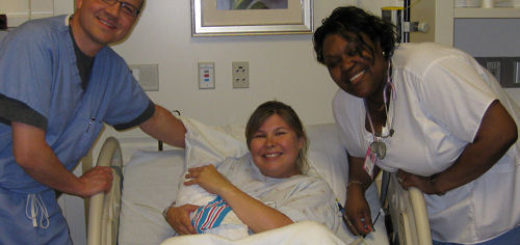My microlending boy
Last week around this time, I was in the back of a Volkswagon and sliding out of a misty Rosario, Argentina. The city’s huge monuments and cloud-soaked buildings escaped through the back window as the car raced along the the riverbank and toward Buenos Aires. With each fleeting mile, the poverty grew worse and to the point it was almost unbearable to witness. The richest of the poor had a bedraggled horse tied up next to their trash-strewn hillside shacks. Most everybody else simply had lean-to buildings made of piled-together scraps and rotten wood. It’s a kind of poverty an American rarely sees and, as a human being, it’s humbling in a way that most people don’t understand. While this is not a comment on Argentina–a fine country of fine people–nor a claim of American superiority, the poverty I’ve seen over the past two years in Central and South America has been an uncomfortable reminder that it’s fairly wrong of me to complain that my three-bedroom, two and half bath, split-level house with a two-car garage is too small for my family.
When I was my son’s age, my family wasn’t well off. If we were middle class at the time, it was at the lower part of the curve. My dad had come from a proud but poor family, from a mother that had nine kids, and from a place where bathwater was shared among the children. My old man vowed early in his life that his family wouldn’t worry about how much water they’d use. My mother, a woman of similar circumstances, once told stories of getting oranges as Christmas presents. Again, a parental vow that money would become more an afterthought than a constant worry. In my earlier years, I remember a sense of comfort in knowing how hard my parents worked. Wirh me in the back of my dad’s old black Monte Carlo, my family would drive down a street off Springfield, Missouri’s West Bypass that defined for my young mind what poverty really was. It was my dad’s way of reminding me that other folks didn’t have an easy row to hoe.
Because my wife and I come from hardworking families and have been modestly successful ourselves, we’ve been afforded a fairly worry-free road. We try not to forget about that. We also try to help our kids remember that but for a lot of work, a lot of luck, and some unrealistically beautiful serendipity, our lives wouldn’t be quite as fantastic as they are. We do our best, but even we two thirty-somethings (ones that our more conservative friends would call bleeding hearts) can get caught up in the want for more–a new car, a new house, a few acres, whatever. It’s nice when someone comes along and helps us back to the right track.
I’d heard of Kiva a couple of times on the Stuff You Should Know podcast but hadn’t checked it out until a longtime Rapid Eye Reality reader, commenter, and invisible email correspondent, Ken, played the role of the tooth fairy and sent my boy a $25 gift certificate from Kiva.org for losing his first tooth. It was a, frankly, touching gesture from a man I’ve never met and one sent with the hope my boy would become, in Ken’s words, “a thoughtful young gentleman.”
If you’re not familiar with Kiva or the concept of microlending, think of it like this: You want to start a business, but you’re poor. Your credit is horrible. You live in a place where few people have much money, investors won’t look at you, and your chances of making anything of your idea are zilch. Mircrocredit and microlending allow these people to receive very small loans–money they are expected to pay back–that can help them on the road to starting their own enterprise. In cases that have proven successful around the world, microloan recipients have risen out of poverty, become credit-worthy, and escaped the muddy road that being poor in an underdeveloped country can be.
 This morning, the boy and I sat down at the computer and read through the dozens of potential loans. After a talking about it for a while, the boy decided he wanted to send his $25 loan to a man name Ramiro in Nicaragua who is working to buy equipment for his small family farm. The total loan Ramiro needs? Three hundred bucks. Seriously, that’s what it takes to start a family of four on its trip out of poverty. Yesterday, I thought my camera was dead and I was going to buy a new one on eBay without a second thought. The cost would’ve been close to the same. That’s the difference.
This morning, the boy and I sat down at the computer and read through the dozens of potential loans. After a talking about it for a while, the boy decided he wanted to send his $25 loan to a man name Ramiro in Nicaragua who is working to buy equipment for his small family farm. The total loan Ramiro needs? Three hundred bucks. Seriously, that’s what it takes to start a family of four on its trip out of poverty. Yesterday, I thought my camera was dead and I was going to buy a new one on eBay without a second thought. The cost would’ve been close to the same. That’s the difference.
There is a sense in America and other better-off countries that the reason people are poor is because they are lazy, ignorant, or lacking basic ingenuity. I’m not so blind as to not accept that there are poor folks who are poor–in America and everywhere else–because they aren’t willing to work. I think it’s fair to say, however, that most people who face poverty don’t face it by choice. If you’re in times of financial struggle and you’re wanting to try and receive a loan with bad credit you may also want to think about researching into other loan types such as if you were to compare £1,000 guarantor loans from various lenders. While my father was a great example of a man doing the old “bootstrap” thing, he is the exception. Frankly, it seems just mean to think that only a few people should be allowed to escape poverty–only those people who found success in spite of a mountain of trouble or those people who got lucky. In a world of such wealth, gross consumerism, and $150 hamburgers, people shouldn’t have to hope they get lucky.
At least, that’s what I’m trying to teach my boy.
Thanks, Ken, for the gift. It’s the best you could’ve given.


Thanks for this.
Giving is a requirement in our house but not without making sure they know how easy they have it.
I try to use the law of relativity with them when they think their life is so horrible because the wii is in time out. Great read.
I’ve been recycling the same couple hundred bucks on Kiva for a few years now. He’s going to love seeing that loan slowly repaid and then being able to lend it again and again.